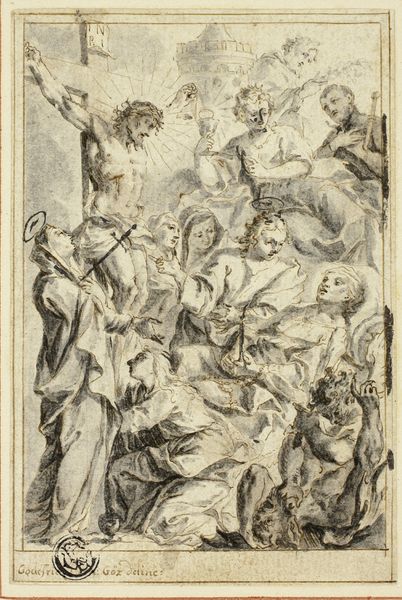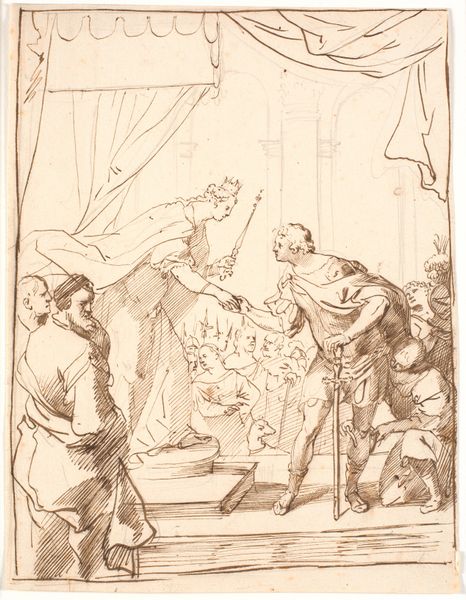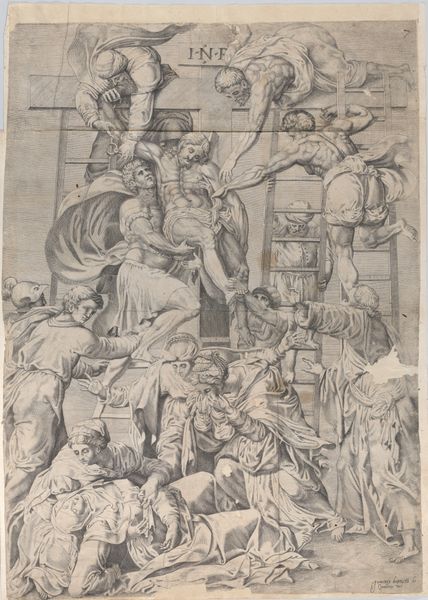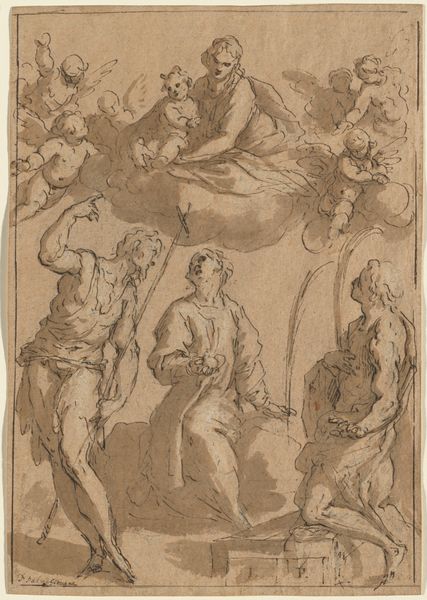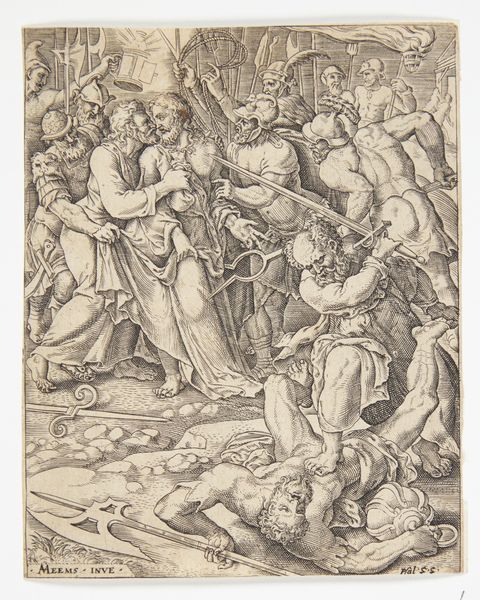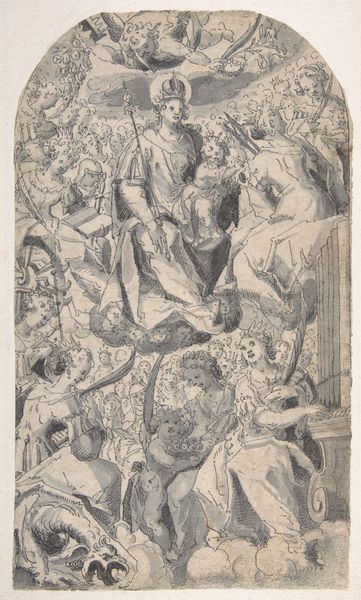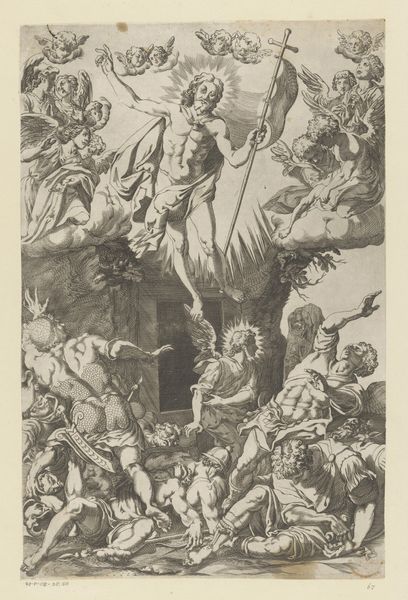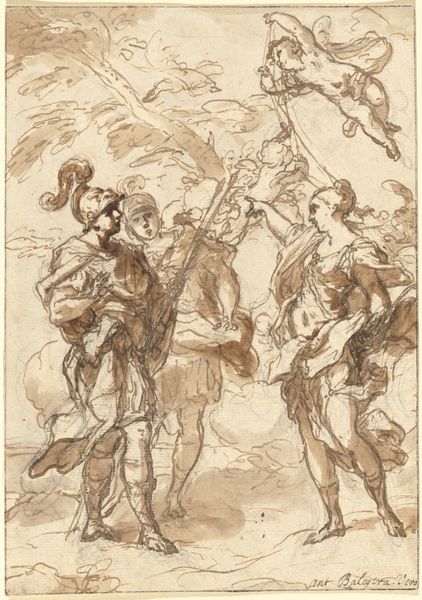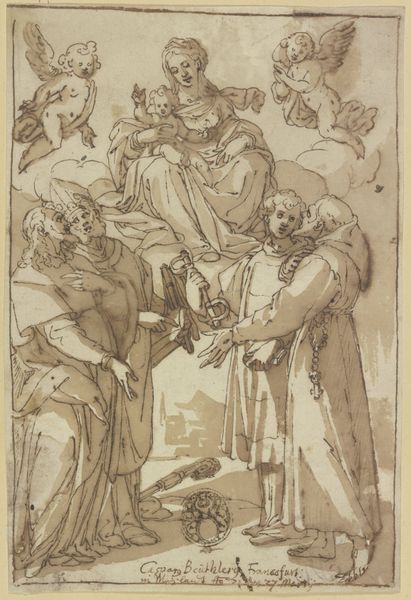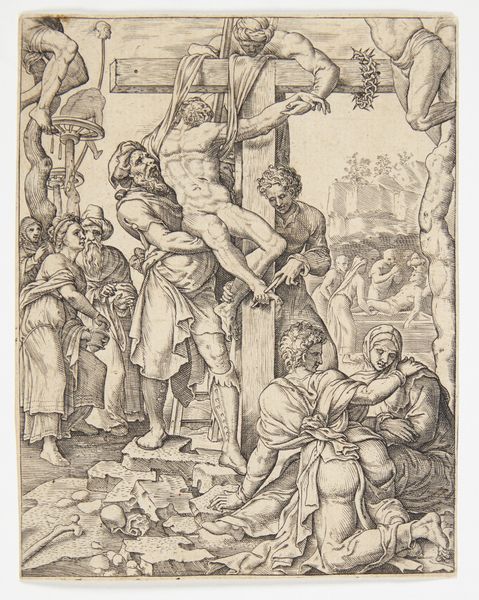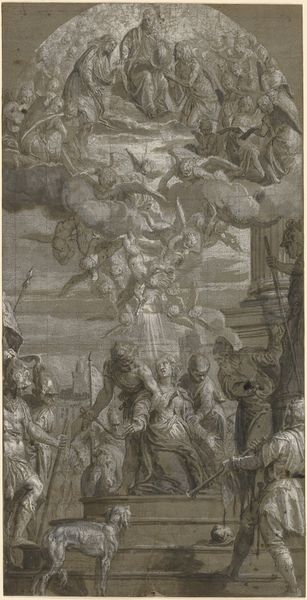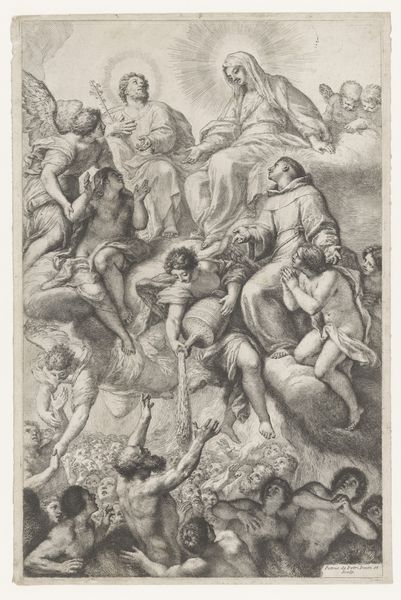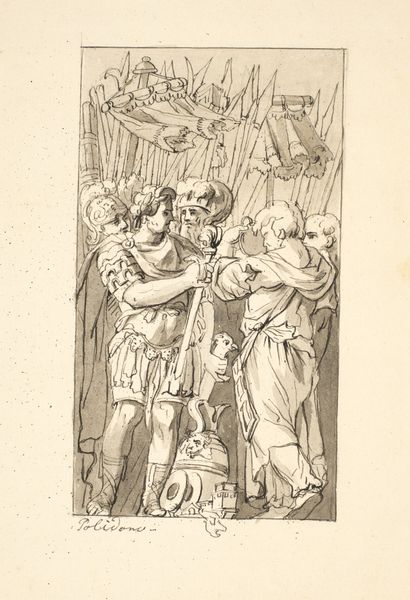
The Immaculate Conception with Sts John the Evangelist, Gregory the Great, John Chrysostom and Augustine 18th century
0:00
0:00
drawing, ink, pen
#
drawing
#
ink drawing
#
baroque
#
pen sketch
#
pencil sketch
#
figuration
#
ink
#
pen
#
history-painting
Dimensions: 456 mm (height) x 254 mm (width) (bladmaal)
Editor: This is an 18th-century ink drawing titled "The Immaculate Conception with Sts John the Evangelist, Gregory the Great, John Chrysostom and Augustine." It’s fascinating – the composition is so dynamic, with the Virgin Mary surrounded by saints and angels, but I'm curious about its purpose and underlying message. How do you interpret this work? Curator: It is compelling to examine how depictions of the Immaculate Conception served as visual arguments during a period rife with theological debates and societal shifts. Consider the role of female figures like the Virgin Mary within a patriarchal structure. What power dynamics are at play when you have an artwork that simultaneously elevates a woman to divine status yet reinforces her dependence on male religious figures like the saints? Editor: That’s a perspective I hadn’t considered. So, you’re saying it's less about pure religious devotion and more about how these images were used to negotiate power? Curator: Precisely. Look at the specific saints chosen – John the Evangelist, Gregory the Great, Augustine… They each represent different facets of Church authority. And notice how they're positioned in relation to Mary. How does that affect our understanding of the role of women? Editor: They appear as intercessors and authoritative figures...almost gatekeepers to her divinity? Curator: Yes, and how does this relate to how women in the eighteenth century navigated their own agency, working within the confines of established patriarchal systems? Considering the absence of female theologians, how does Mary reflect that period in history? Editor: It really pushes me to consider the art from the era critically beyond simply appreciating its aesthetics. I can see the piece with fresh eyes and recognize the cultural implications woven within the work. Curator: Absolutely, that’s how we can recognize the layers of sociopolitical ideologies and power that permeate even seemingly straightforward devotional pieces.
Comments
No comments
Be the first to comment and join the conversation on the ultimate creative platform.
